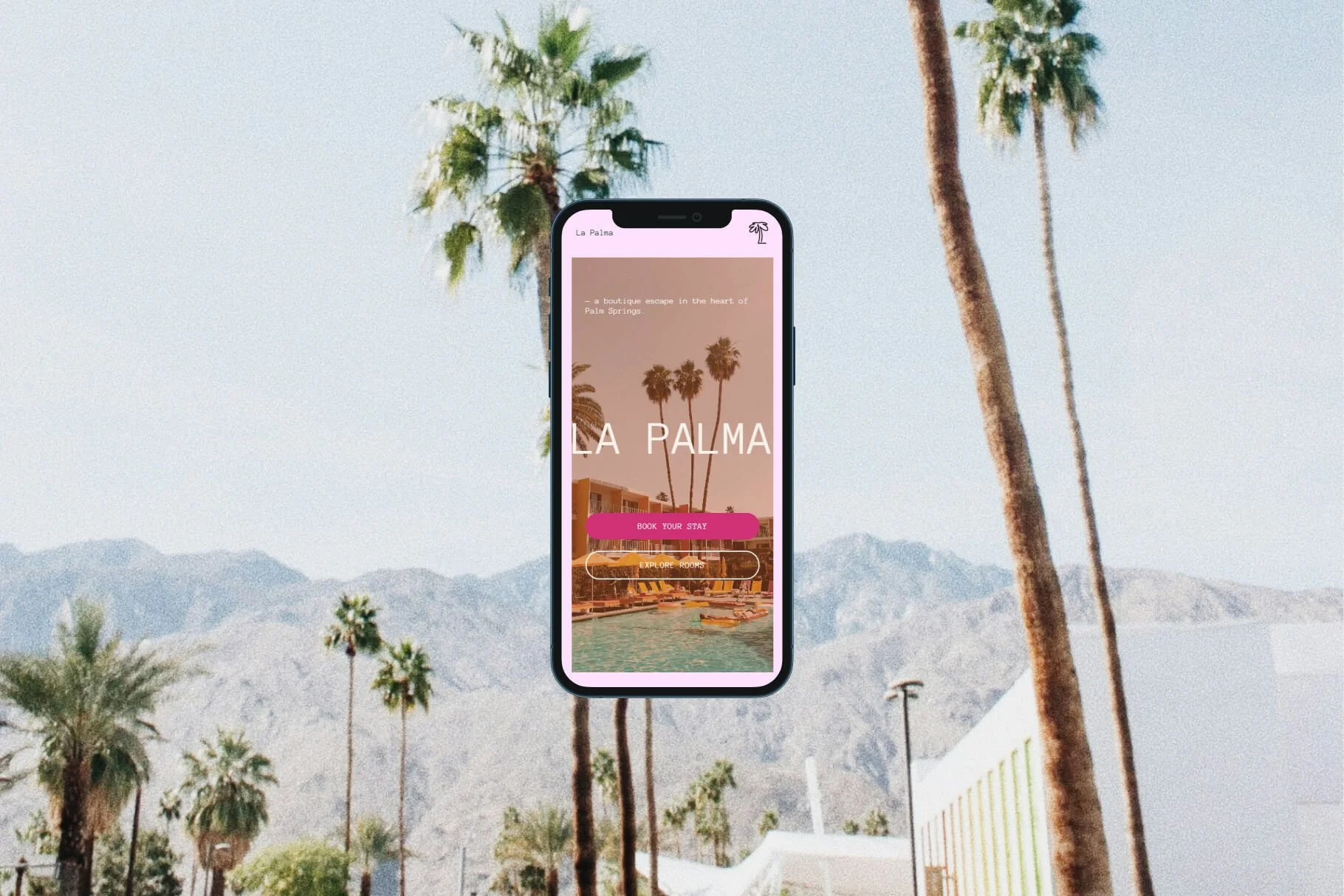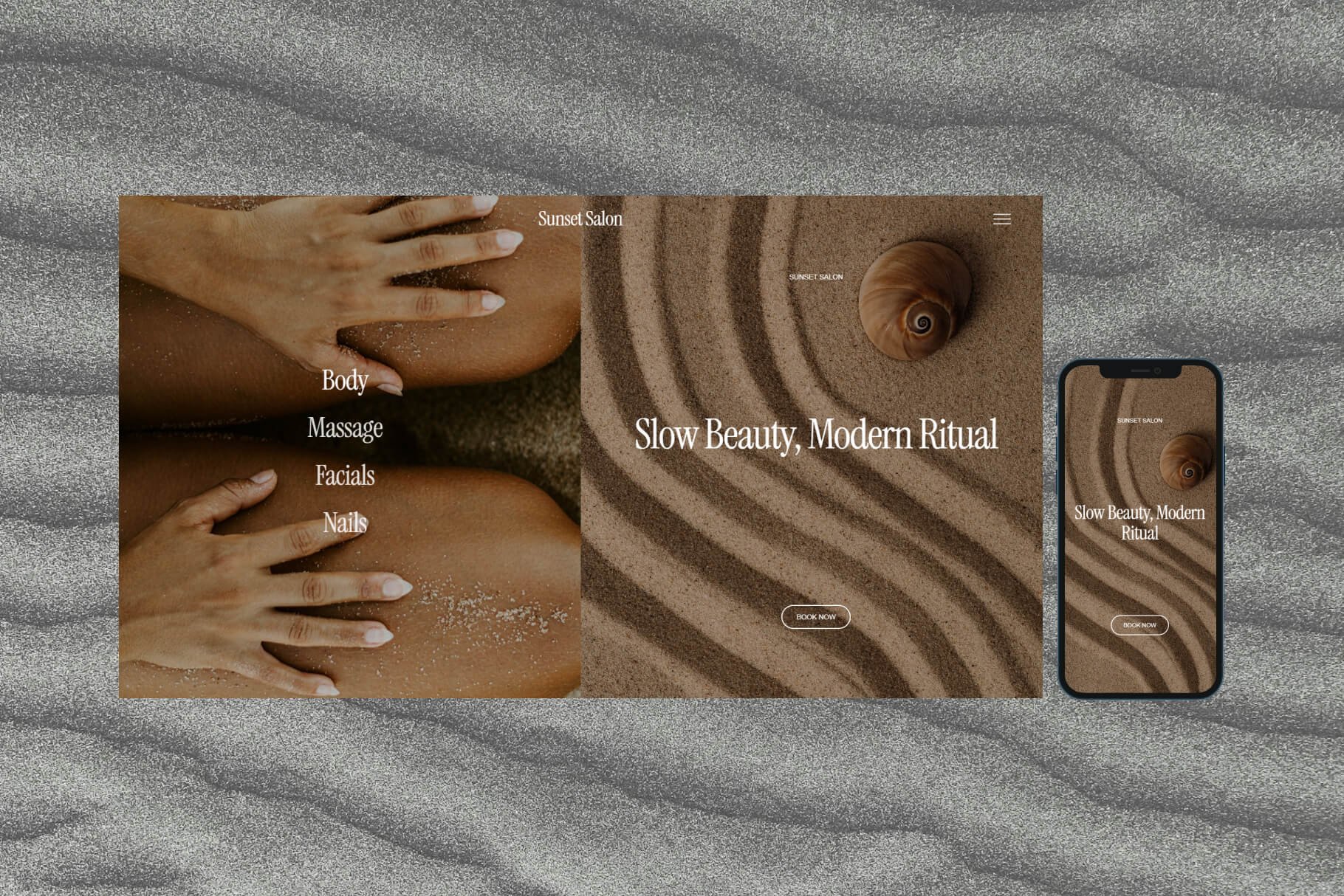How to build a boutique hotel website
In the world of boutique hospitality, your website is the lobby. It’s the first thing your guest sees, the moment they begin to imagine their stay. And just like the hotel itself, it should feel curated, seamless, and unforgettable.
Whether you're launching a new boutique accommodation or elevating an existing property, here’s how to build a website that doesn’t just look stunning - but also books.
How to build a boutique hotel website
1. Lead with story, not price:
People book experiences, not just rooms.
Boutique hotel guests are drawn to narrative and atmosphere. Your website should reflect that.
Use high-quality imagery that captures the texture, light, and lifestyle of your space.
Open with a strong brand story or philosophy—what makes your stay different?
Avoid stock clichés. Speak with warmth, presence, and place.
✦ Tip: A short cinematic video or moving image on the homepage can evoke instant emotion and luxury.
2. Make booking effortless:
The fewer the clicks, the higher the conversion.
Design your booking flow with your ideal guest in mind—one who values ease and polish.
Integrate a clean, on-brand booking system (whether via a third-party engine or custom solution).
Use sticky headers or CTAs that follow the user as they scroll.
Display availability and rates clearly without forcing too many steps.
✦ Bonus: Offer perks for direct bookings (e.g. late checkout, upgrades) and make that value obvious.
3. Design for mobile wanderlust in mind
Most bookings happen from phones — design accordingly.
A potential guest might discover your hotel on Instagram, click through, and land on your mobile site. Don’t disappoint.
Ensure fast loading speeds and minimalist design.
Use mobile-first layouts: scrollable galleries, tapable navigation, readable text.
Reduce form friction - auto-fill, minimal fields, one-click bookings.
✦ Consider a “Tap to Call”, phone number hyperlinks or a WhatsApp feature for concierge-style customer service.
4. Curate the Surroundings
Sell the location, not just the linens.
People stay in boutique hotels because they want to feel immersed. Use your website to reflect the lifestyle of the area.
Create a curated local guide: cafes, galleries, trails, wineries.
Add a “journal” or editorial-style blog to enhance search rankings and brand storytelling.
Collaborate with local creators or photographers for content that feels fresh and real.
5. Build Trust and Desire Simultaneously
Trust builds conversion. Aesthetic builds desire. Together, they close.
Use testimonials and real guest reviews (bonus for UGC or video).
Create a sense of scarcity (“only 4 suites available for these dates”) to trigger action.
Ensure all information is up to date—rates, check-in times, policies.
✦ Use soft, sensory language in your copy—but pair it with crisp UX. This contrast is what boutique digital experiences are made of.
6. Add Layers of Brand
Turn your hotel into a lifestyle.
The best boutique hotel websites don’t just say “stay here”—they say, this is who we are.
Add a shop: sell candles, robes, curated goods from your rooms.
Add a newsletter: share seasonal updates, recipes, renovations, behind-the-scenes.
Consider a loyalty tier or VIP club for repeat stays or referrals.
✦ Want to scale bookings without discounting? Build a stronger brand. This starts on your site.
Want a shortcut to taking your hotel business online?
From modern boutique hotels to luxury accommodations and design-led Airbnbs, we design strategic, sensory websites that help you scale direct bookings, elevate your brand and stay booked out.
Transform your vision into a stunning online presence with our La Palma Website Template.

































